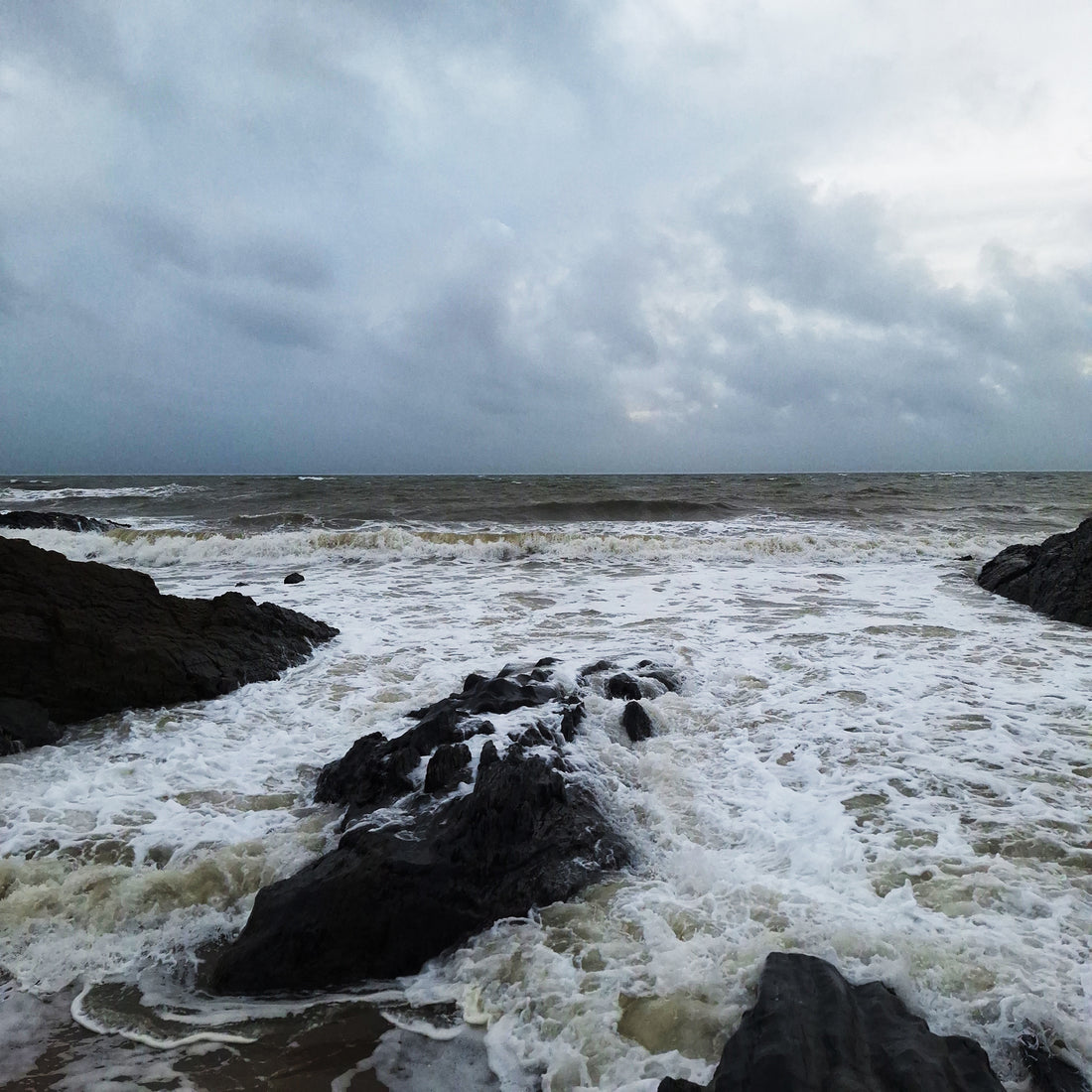When I see, think, and consider the idea of climate change, I feel apprehensive and fearful, particularly regarding the future and my children but I also feel inadequate because what can I do, as an individual to help alleviate what is a monumental, wicked problem. Picking up pieces of rubbish off the beach here and there has a positive effect but this act feels far removed from the issues surrounding a change in climate.
Climate change is a phenomenon driven by pollution, but pollution comes in many forms and by its very nature causes problems of varying degrees. Of all the pollution we expose our planet to, one form seems to override all others, burning fossil fuels. This persistent pollution has changed and is changing our world. Global climates, tropical, temperate, polar, dry, and continental have all been and are being affected. Collectively warming to temperatures that are on course to exceed the global average since the Industrial Revolution by 1.5°C, and rising, even to the extent of 3°C and the results seem dire (1,4).

(2)
There are deniers out there but let’s not waste time going over their motivations or reasoning. Many may be fed by fossil fuels. In counter, the scientific consensus and evidence exists, and it is likely that climate change presents what can be seen as existential threats to our existence. It is scary stuff, yet it doesn’t seem to motivate people to change (3). There seems a disconnect. On the one hand systems of production and consumption of energy as much as materials, are a cause of climate change, yet on the other we’re often told increased productivity and consumption garners growth and growth leads to a better, stronger, stable economy.
As Espinosa states, at some level, all our daily activity is bound to resource and energy consumption which puts pressure on and impacts the natural environment. And this level has increased as the average person in 2017 consumed 65% more resources than they would have in 1970. As a result, the extraction and processing of resources in the flow of materials for production and consumption is responsible for around half of greenhouse gas emissions and over 90% of global biodiversity loss. It is a dilemma encapsulated by the cycle of capitalism. For economic growth to exist, production needs to be sold, and to sell we need to consume. Profits are then reinvested to spur more production, not to nourish our needs, but to garner more economic growth (4).
The existential threat coming from climate change might not be the destruction of humanity’s actual existence or the whole of existence in one go. It is uncertain what lies ahead. It might be island nations like the Republics of Kiribati or the Maldives disappearing under water, flooding like in Bangladesh, wildfires in London, or the frequency of more storms. What’s clear is cause and consequence have not and will not be felt symmetrically across the world. Since 1850, the Global North has been responsible for 92% of cumulative CO2 emissions. Cause and consequence depend on wealth, class, and geography (4), the roots of which date back five centuries to the rise of European colonialism and coloniality today. In effect, different people, from different parts of world, have and will have different experiences. Under capitalism ecological impact and resource consumption is linked to wealth and in wealthier countries, the higher up the income strata you rise, the more you consume (4) but what if environmental degradation wasn’t the only threat?
Climate change today is “the mother of all issues” (5), a problem of pollution but what if it was systemic of a bigger picture, one of systems collapse, interrelated and interdependent on other systems, industrial, agricultural and services and what if it was the endless quest of economic growth which was driving such a threat? And what if the projected date for such systems collapse was the year 2100? (6)
Although the debate has changed since because there is now consensus to the pressures of economic growth and the associated impacts on the natural environment (4), to explore such a notion and gain an understanding to what might cause systems collapse, we need to go back five decades to the seminal publication, The Limits to Growth and to the global consequences of five fundamental development trends; pollution, population growth, industrialisation, malnutrition, and the exploitation of raw materials (6), framed today as planetary boundaries, five of which we may have already exceeded. (4)
- Carrington, D. (2023) ‘World facing ‘hellish’ 3C of climate heating, UN warns before Cop28’, The Guardian, Available at: World facing ‘hellish’ 3C of climate heating, UN warns before Cop28 | Climate crisis | The Guardian
- Stern, N. (2006) ‘Projected impacts of climate change’. Available at: The projected impacts of climate change. Source: Adapted from Stern, N. (2006). - Bing images (Accessed: 15 October 2022)
- Brook, I. (2009) ‘Turning Up the Heat on Climate Change: Are Transition Towns an Answer?’, Environmental Values, May 2009, Vol. 18, No. 2, pp. 125-128. Available at: BROOK-TurningHeatClimate-2009.pdf
- Espinosa, A, G. (2022) ‘The Limits to Growth, Ecosocialism or Barbarism’, Monthly Review, vol, 74, No. 3 July-August 2022. doi: https://doi.org/10.14452/MR-074-03-2022-07_2
- Hulme, M. (2009) ‘Why we disagree about climate change’. Available at: Hulme-Carbon-Yearbook.pdf
- Meadows et al. (1972) The Limits to Growth. Available at: The Limits to Growth. A report for the Club of Rome's project on the predicament of mankind. (secureserver.net)

